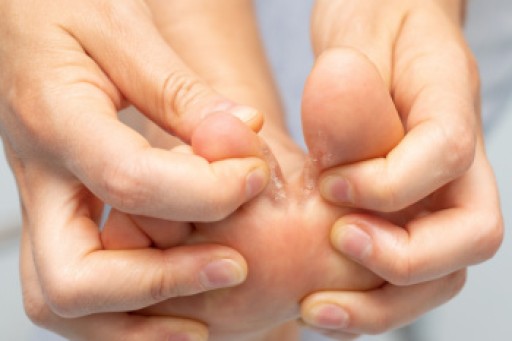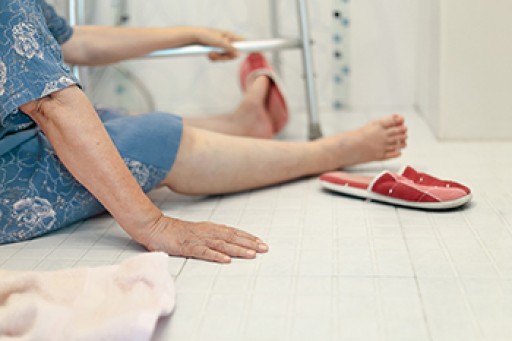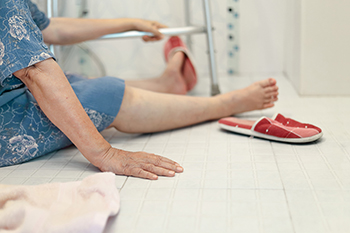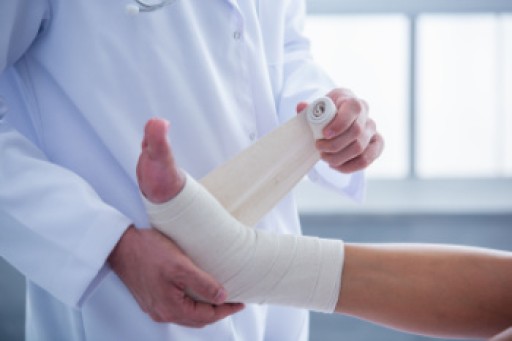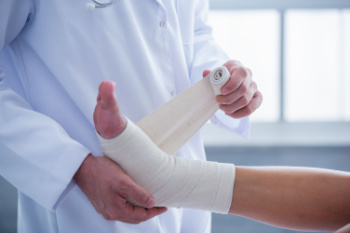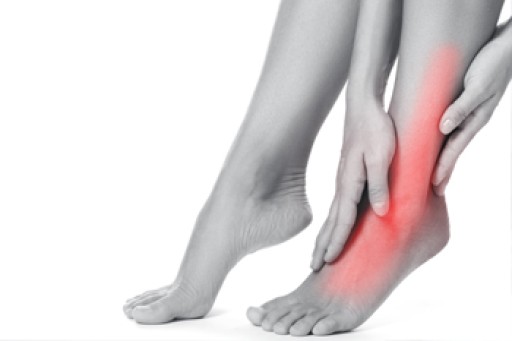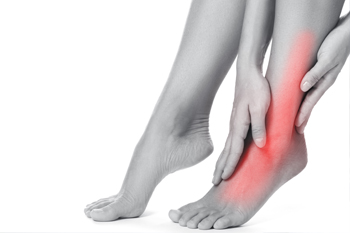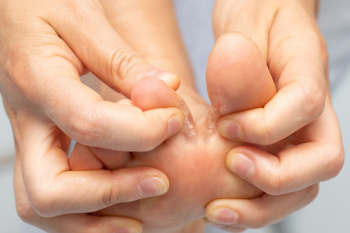 Athlete's foot, a fungal skin infection of the foot, can become severe and cause blisters or ulcers. Severe athlete’s foot can be a persistent and debilitating condition that significantly impacts a patient’s quality of life. The advanced stage of the infection is characterized by intense itching, burning, and a noticeable degradation of the skin on the feet. This includes cracking, peeling, and the emergence of blisters. Ulcers, or deep sores, may appear on the heel or ball of the foot. Where athlete’s foot normally appears between the toes or the side of the foot, severe athlete's foot may spread beyond these areas to the rest of the foot. This can lead to secondary bacterial infections due to the compromised integrity of the skin. Treatment usually includes a multi-step approach, such as prescribed antifungal medications, rigorous hygiene practices, and possibly lifestyle adjustments. If you suspect athlete’s foot, it is suggested that you make an appointment with a podiatrist promptly to prevent the condition from worsening.
Athlete's foot, a fungal skin infection of the foot, can become severe and cause blisters or ulcers. Severe athlete’s foot can be a persistent and debilitating condition that significantly impacts a patient’s quality of life. The advanced stage of the infection is characterized by intense itching, burning, and a noticeable degradation of the skin on the feet. This includes cracking, peeling, and the emergence of blisters. Ulcers, or deep sores, may appear on the heel or ball of the foot. Where athlete’s foot normally appears between the toes or the side of the foot, severe athlete's foot may spread beyond these areas to the rest of the foot. This can lead to secondary bacterial infections due to the compromised integrity of the skin. Treatment usually includes a multi-step approach, such as prescribed antifungal medications, rigorous hygiene practices, and possibly lifestyle adjustments. If you suspect athlete’s foot, it is suggested that you make an appointment with a podiatrist promptly to prevent the condition from worsening.
Athlete’s Foot
Athlete’s foot is often an uncomfortable condition to experience. Thankfully, podiatrists specialize in treating athlete’s foot and offer the best treatment options. If you have any questions about athlete’s foot, consult with one of our podiatrists from Community Foot Specialists. Our doctors will assess your condition and provide you with quality treatment.
What Is Athlete’s Foot?
Tinea pedis, more commonly known as athlete’s foot, is a non-serious and common fungal infection of the foot. Athlete’s foot is contagious and can be contracted by touching someone who has it or infected surfaces. The most common places contaminated by it are public showers, locker rooms, and swimming pools. Once contracted, it grows on feet that are left inside moist, dark, and warm shoes and socks.
Prevention
The most effective ways to prevent athlete’s foot include:
- Thoroughly washing and drying feet
- Avoid going barefoot in locker rooms and public showers
- Using shower shoes in public showers
- Wearing socks that allow the feet to breathe
- Changing socks and shoes frequently if you sweat a lot
Symptoms
Athlete’s foot initially occurs as a rash between the toes. However, if left undiagnosed, it can spread to the sides and bottom of the feet, toenails, and if touched by hand, the hands themselves. Symptoms include:
- Redness
- Burning
- Itching
- Scaly and peeling skin
Diagnosis and Treatment
Diagnosis is quick and easy. Skin samples will be taken and either viewed under a microscope or sent to a lab for testing. Sometimes, a podiatrist can diagnose it based on simply looking at it. Once confirmed, treatment options include oral and topical antifungal medications.
If you have any questions, please feel free to contact our offices located in Beavercreek, Dayton, and Vandalia, OH . We offer the newest diagnostic and treatment technologies for all your foot care needs.
